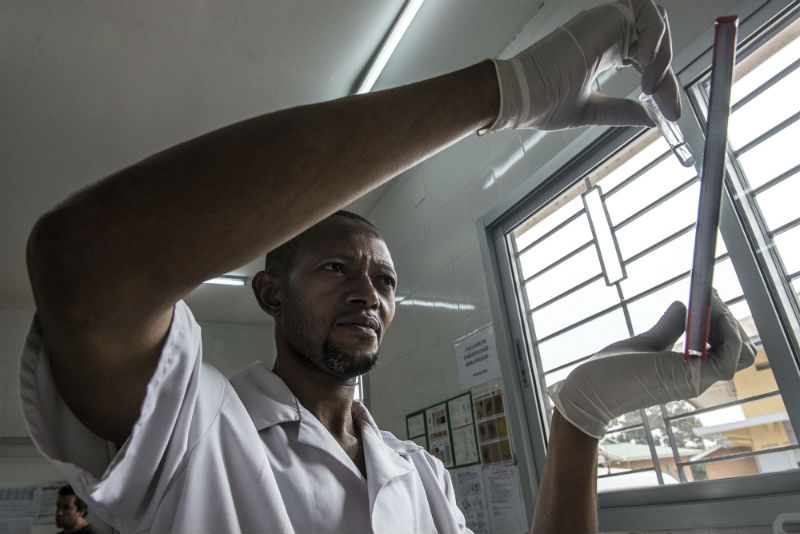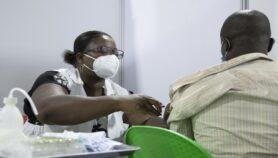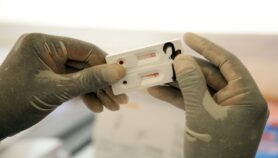Send to a friend
The details you provide on this page will not be used to send unsolicited email, and will not be sold to a 3rd party. See privacy policy.
[NAIROBI] A programme to increase the proportion of people aware of their HIV status and receiving antiretroviral therapy could cut viral spread in resource-limited settings with high rates of HIV infection, preliminary findings of a trial suggest.
The trial known as PopART is being conducted to assess the feasibility of achieving the UNAIDS goal of 90 per cent of people infected with HIV knowing their status, 90 per cent of people diagnosed with HIV receiving antiretroviral therapy and 90 per cent of those on treatment having viral suppression.
“After just one year of a test-and-treat intervention, nearly 90 per cent of women and 80 per cent of men with HIV know their status.”
Richard Hayes, London School of Hygiene and Tropical Medicine
According to the study published in PLOS Medicine last month (2 May), universal testing and treatment is based on the idea that as everyone in the community becomes aware of their HIV status and those HIV positive taking their medicines rapidly, they are unlikely to spread the virus.
Researchers from South Africa, the United Kingdom, United States and Zambia enumerated 121,130 adults — 59,283 men and 61,847 women — in 46,714 households covering urban and peri-urban communities in Zambia during the first annual round conducted from December 2013 to June 2015.
According to Richard Hayes, the study’s lead researcher from the UK-based London School of Hygiene and Tropical Medicine, early findings of the trial are encouraging, and could help curb the spread of the virus.
“They show that after just one year of a test-and-treat intervention, nearly 90 per cent of women and 80 per cent of men with HIV know their status, and about 75 per cent of these are on antiretroviral therapy,” says Hayes, in a statement by LSHTM published last month (3 May).
Laban Kariuki, managing director of Kenya-based Serian Health Care, says the study demonstrates that universal test and treat interventions are feasible in large populations, but highlights the challenges of getting men to know of their HIV status.
“We need new and innovative ways to reach men and get them to know their status,” explains Kariuki, a member of the Pharmaceutical Society of Kenya.
“Women access testing mostly due to the success of PMTCT [prevention of mother-to-child transmission] efforts and also due to their health-seeking behaviour. Routine testing for men is yet to be established. The answer is to reach men where they are.”Kariuki adds that policymakers should expand the avenues through which treatment is available to include private sector providers.
This piece was produced by SciDev.Net’s Sub-Saharan Africa English desk.














